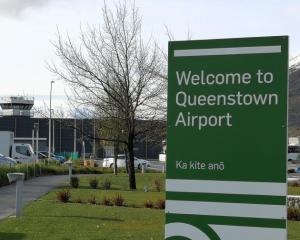
The NZDF has swapped the desert heat of Arizona for the summer sun of Alexandra for a parachute training exercise to be run across Central Otago for much of the month.
About 20 personnel are based in Alexandra, including students, packers (those tasked with ensuring the storage and safety of parachute equipment), and instructors.
Air Force Squadron Leader Ceilidh Martin said Covid-19 had put paid to plans for the RNZAF Parachute Training Support Unit to conduct the training in Arizona and Alexandra was selected for its conditions, with low wind and little cloud cover.
"Alexandra has the optimal parachuting conditions for all of New Zealand for this time of year."
It was also ideal to implement a different training programme to those used in the past, she said.
"We’ve just reorganised the type of parachuting we teach first."
Her colleague, Warrant Officer Justin Tamehana said the training encompassed parachuting as a method of delivering military personnel, military equipment, and other military supplies from a transport aircraft at a high altitude.

Two techniques were used, HALO (high altitude — low opening, often called a HALO jump) and HAHO (high altitude — high opening).
The biggest difference between military and civilian parachuting should be fairly obvious, he said.
"Civilians parachute for recreation, military personnel use it to get to work.
"It is about inserting combat troops into an area where an aircraft can’t land."
That also included tandem parachute jumps to take non-military personnel, such as medical professionals, into the same territory.
The exercise runs until February 26 and caused excitement in Alexandra on Monday, when a C-130 Hercules landed at Alexandra Airport to drop off equipment for the operation.
Training proper started yesterday as six NZDF personnel were put through their paces jumping from a Caravan 208 aircraft contracted from North Shore aviation business Airlift New Zealand.
The exercise began with a streamer drop from the aircraft to gauge wind direction and velocity to ensure the jumpers would land at their intended target.
That involved the aircraft climbing to 12,000ft before the jump.
Jumpers free fall for about 100ft to reach terminal velocity and continue to free fall for about 50 seconds before deploying the parachute canopy at about 2000ft.
The Hercules will return for the training exercises on February 10 and will operate around Alexandra, Omakau, Wanaka, and Dunedin, where it will be based between active duty.
The training includes both day and night time jumps.












